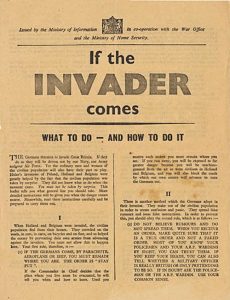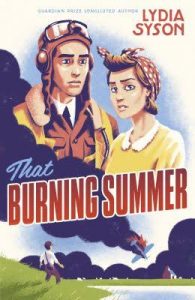“Where do you get your ideas?”
That’s a question people ask writers all the time. Of course there are lots of different answers. Sometimes a story is sparked by a single ‘lightbulb’ moment – like when I discovered that in Kent during World War Two fighter planes literally disappeared into the ground and their pilots vanished.
‘What if….?’ I started to think.
The idea grew and the questions multiplied.
I started to dig a bit deeper – half the fun of writing. I wandered round museums, read diaries and letters, interviewed people, looked at photographs, watched films, listened to music and old radio programmes. And I had a different kind of lightbulb moment. I found an absolutely fantastic source.

It was a leaflet called ‘If the Invader Comes’. In June 1940, the guns of occupied France could be heard from the coast of Kent, and the Government knew it might not be long before German soldiers were on British doorsteps.So every household in the country got a copy of this.
Frightening reading. There are seven alarming rules, and all sorts of confusing advice. The leaflet gives an incredibly strong sense of that hot and terrifying summer. It conjures up a world of uncertainty and threat.
You weren’t allowed to run away, but had to ‘stay put’.
You didn’t know who you could trust, what to believe, whether people in uniforms issuing orders were really who they said they were.
You had to hide maps, bicycles and food from the enemy. Above all, you had to rely on your common sense.
A ‘source’ like this is important for historians but it’s also invaluable for story writers. It gave me lots of ideas about how the characters in my novel That Burning Summer might react to events.
You can see more here: https://history.blog.gov.uk/2015/06/18/invasion-publicity-during-the-second-world-war/

